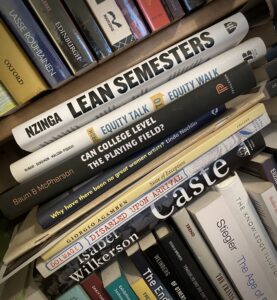Recent months have witnessed heightened gender-related conflicts in higher education. From debates over transgender athletes to challenges against Diversity, Equity, and Inclusion (DEI) initiatives, a narrative portraying universities as ideological battlegrounds has gained traction. Political figures, including Vice President J.D. Vance, have amplified this perspective, saying “universities are the enemy” as sites of indoctrination rather than education.[1]
 Beneath these controversies lies a significant but often unacknowledged factor: women’s dramatic ascendance in higher education. The gender gap in college enrollment has reached historic proportions, with female-identified learners constituting approximately 60% of U.S. college students.[2] This unprecedented shift, a cornerstone of women’s empowerment and presence in the workforces, appears to have become a focal point for those seeking to reshape or constrain the university system.
Beneath these controversies lies a significant but often unacknowledged factor: women’s dramatic ascendance in higher education. The gender gap in college enrollment has reached historic proportions, with female-identified learners constituting approximately 60% of U.S. college students.[2] This unprecedented shift, a cornerstone of women’s empowerment and presence in the workforces, appears to have become a focal point for those seeking to reshape or constrain the university system.
The gender gap in education begins well before college, with girls outperforming boys in reading and writing during elementary years and making up 60 percent of the top students graduating from high school.[3] In the 1990s, some universities began giving boys extra points on their applications, owing to concerns that students might avoid gender imbalanced schools. While federal law never sanctioned this kind of affirmative action, a Title IX lawsuit filed against the University of Georgia in 1999 effectively ended the practice.[4]
The historical context illuminates the significance of this transformation. Before the mid-20th century men made up 80% of college students.[5] Women’s integration into universities in substantial numbers, accelerating after World War II, represented a profound social change. This evolution challenged established gender norms, created pathways to professional careers for women, and contributed substantially to their economic and social independence.[6]








